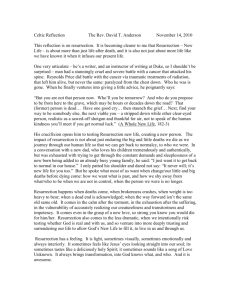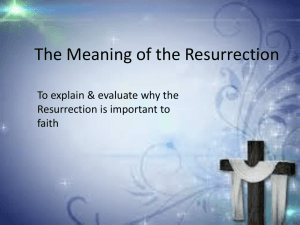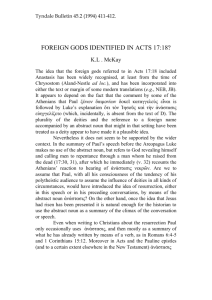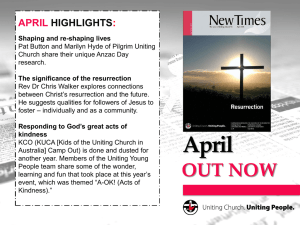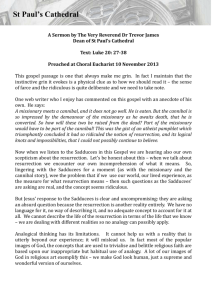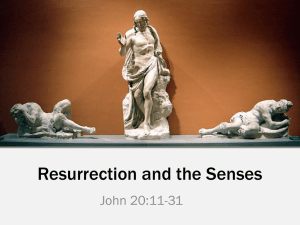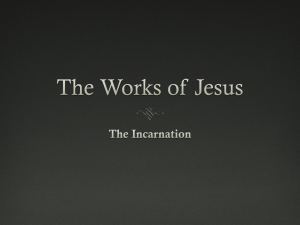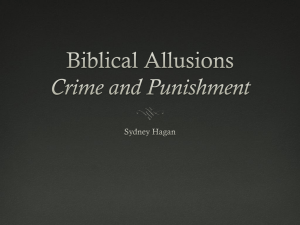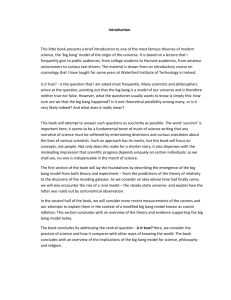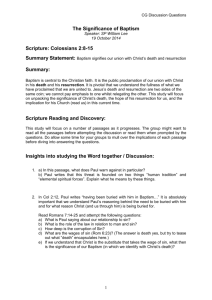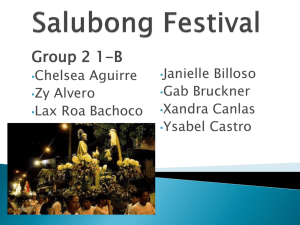to get the file - Hereford Cathedral
advertisement
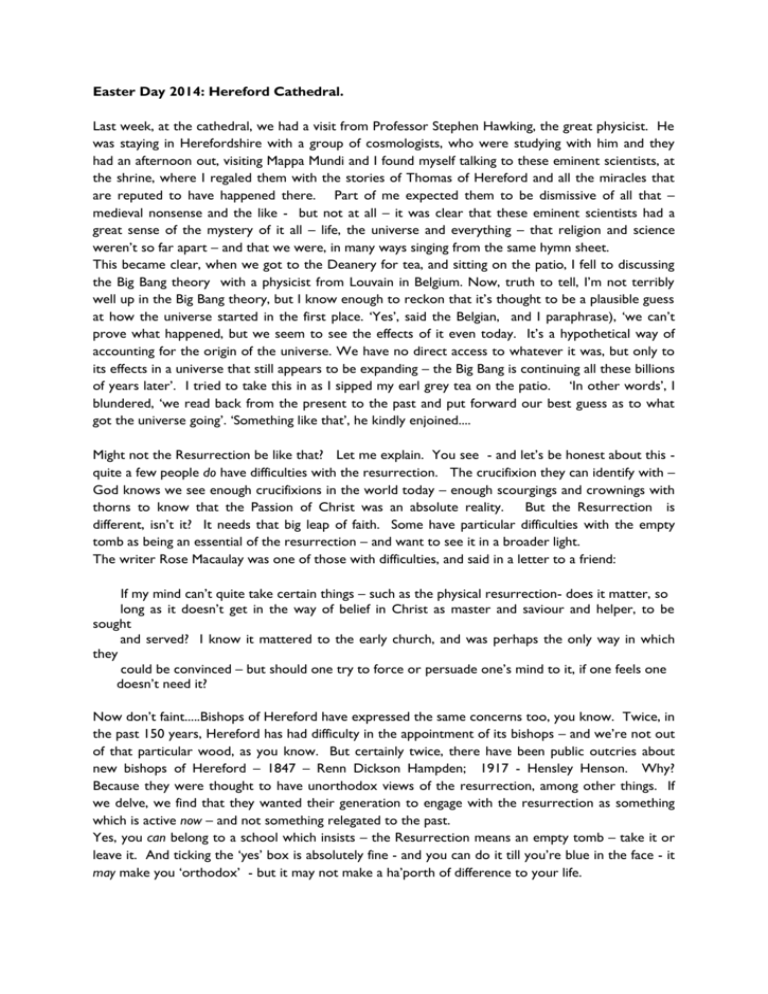
Easter Day 2014: Hereford Cathedral. Last week, at the cathedral, we had a visit from Professor Stephen Hawking, the great physicist. He was staying in Herefordshire with a group of cosmologists, who were studying with him and they had an afternoon out, visiting Mappa Mundi and I found myself talking to these eminent scientists, at the shrine, where I regaled them with the stories of Thomas of Hereford and all the miracles that are reputed to have happened there. Part of me expected them to be dismissive of all that – medieval nonsense and the like - but not at all – it was clear that these eminent scientists had a great sense of the mystery of it all – life, the universe and everything – that religion and science weren’t so far apart – and that we were, in many ways singing from the same hymn sheet. This became clear, when we got to the Deanery for tea, and sitting on the patio, I fell to discussing the Big Bang theory with a physicist from Louvain in Belgium. Now, truth to tell, I’m not terribly well up in the Big Bang theory, but I know enough to reckon that it’s thought to be a plausible guess at how the universe started in the first place. ‘Yes’, said the Belgian, and I paraphrase), ‘we can’t prove what happened, but we seem to see the effects of it even today. It’s a hypothetical way of accounting for the origin of the universe. We have no direct access to whatever it was, but only to its effects in a universe that still appears to be expanding – the Big Bang is continuing all these billions of years later’. I tried to take this in as I sipped my earl grey tea on the patio. ‘In other words’, I blundered, ‘we read back from the present to the past and put forward our best guess as to what got the universe going’. ‘Something like that’, he kindly enjoined.... Might not the Resurrection be like that? Let me explain. You see - and let’s be honest about this quite a few people do have difficulties with the resurrection. The crucifixion they can identify with – God knows we see enough crucifixions in the world today – enough scourgings and crownings with thorns to know that the Passion of Christ was an absolute reality. But the Resurrection is different, isn’t it? It needs that big leap of faith. Some have particular difficulties with the empty tomb as being an essential of the resurrection – and want to see it in a broader light. The writer Rose Macaulay was one of those with difficulties, and said in a letter to a friend: If my mind can’t quite take certain things – such as the physical resurrection- does it matter, so long as it doesn’t get in the way of belief in Christ as master and saviour and helper, to be sought and served? I know it mattered to the early church, and was perhaps the only way in which they could be convinced – but should one try to force or persuade one’s mind to it, if one feels one doesn’t need it? Now don’t faint.....Bishops of Hereford have expressed the same concerns too, you know. Twice, in the past 150 years, Hereford has had difficulty in the appointment of its bishops – and we’re not out of that particular wood, as you know. But certainly twice, there have been public outcries about new bishops of Hereford – 1847 – Renn Dickson Hampden; 1917 - Hensley Henson. Why? Because they were thought to have unorthodox views of the resurrection, among other things. If we delve, we find that they wanted their generation to engage with the resurrection as something which is active now – and not something relegated to the past. Yes, you can belong to a school which insists – the Resurrection means an empty tomb – take it or leave it. And ticking the ‘yes’ box is absolutely fine - and you can do it till you’re blue in the face - it may make you ‘orthodox’ - but it may not make a ha’porth of difference to your life. But suppose - just suppose - the Resurrection is more like the Big Bang. Whatever the originating event was - and however we interpret it, all that we really see is its consequence in the lives of those who encounter it. Just as scientists have looked back, by reading the effect of the universe to the unimaginable moment of its beginning, so theologians have read back from the effects on the disciples – and many people since - to a Big Bang - an enormous happening that caused new life and hope – an event which we can’t quite imagine with our limited human minds, but which was clearly of huge and lasting significance. You could almost say that there are two resurrections – but that only one is available to us today. The first is the originating event – the big bang that ignited the Christian movement; the second is the resurrection now – the continuing impact of Jesus upon history. The Resurrection as a sign or symbol of the possibility of human transformation. And that transformation can be experienced at the personal and at the social level. The Resurrection happened to Saul of Tarsus – dead against the fledgling Christian church – viciously persecuting - but the resurrection, years after the original event – hit him and changed him. Think of the long struggle against apartheid in South Africa and Nelson Mandela’s part in that – the transformation of repressive prejudice into a society with the possibility of united people living and working together. And other movements which have broken down barriers of oppression - be they civil rights – or gay rights – or the place of women in society and the church. Resurrection is the refusal to be imprisoned any longer by history and its long hatreds – it is the imperative to take, with Jesus, the first step out of the tomb of all that holds us back and stunts growth in human life and wellbeing. Perhaps, in the end, Resurrection and Big Bang are not so far apart – for I believe in that resurrection then – Jesus’ Resurrection – because I see new resurrections now – see stones rolled away from old attitudes. And each Easter Day, we surely pledge ourselves afresh - to be witnesses to the Resurrection – every bit as real to us as it was to Mary Magdalen because, with her, every time we see – every time we are part of - justice and freedom and the breaking down of barriers of prejudice – we can say with her, and with countless millions through the ages, ‘I have seen the Lord’. Amen.
